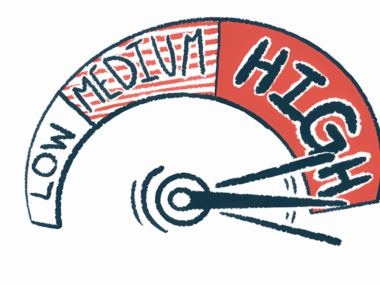Learning how what I eat can fuel my body’s response
Elimination diets have helped me discern which foods cause bad symptoms
Written by |

Six months can feel like forever.
Using an elimination diet to detect food sensitivities can seem to last forever. Many such diets are restrictive at the start, which makes them difficult to stick with for long periods of time. But that’s sort of the point.
In May, I started a six-month stint of using the carnivore diet as my elimination diet of choice. When I started, the only thing I ate was meat. Because of most meats’ high-protein content, I was finding myself satiated and not craving much after eating. Three weeks later, I began adding in other foods, including lettuce and watermelon.
I’d add back one food every three days to test for issues. If I experienced any adverse or unwanted responses, I’d give myself a 24-hour rest and then try that food again. If I experienced the same reaction, that food was added to my “do not eat” list.
Identifying my triggers
Through this process, I’ve identified two food ingredients or components — soy and wheat — that seem to produce inflammation. And let me tell you, soy is in everything. I’ve become one of those “food label” fanatics as I work to identify what condiments and prepared foods contain soy.
Soy causes a headache and makes my body retain fluid within a couple of hours of consuming it. I know that my body is retaining fluid because my rings feel tight on my fingers; I cannot get them off. Moreover, my skin feels bruised, and hugs can feel painful. Usually, though, that doesn’t happen unless I eat a lot of soy or have it in multiple meals.
Wheat isn’t quite as much of a trigger ingredient for me as soy is. I can eat about a sandwich or two cookies worth of wheat before I start feeling the effects. Wheat just causes fluid retention in me.
One of the foods I was playing around with was dairy. I’ve noticed for several years now that any time I consumed anything with dairy — milk, cheese, yogurt, or ice cream — I’d have an increase in phlegm within 15 minutes, leading to coughing fits. Those spells almost always led to shortness of breath from diaphragmatic fatigue.
I was ready to give up dairy until I made a discovery: Drinking water while consuming dairy helped dilute my phlegm enough to avoid a coughing fit. Knowing that, I’m still able to indulge in an ice cream treat or a bowl of cereal every now and again. I also use Fairlife whole milk when I want some cereal, as that brand doesn’t bother me as much.
Foods and MG symptoms
Identifying my food sensitivities has helped me manage my myasthenia gravis (MG) symptoms in a more sustainable way. By avoiding foods I know increase my inflammatory response, I’ve found that I need fewer immediate-release Mestinon (pyridostigmine bromide) pills. I believe that’s because my body isn’t busy attacking the foods I’m sensitive to, thus not accelerating an overactive immune system.
I’ve found that I feel better and have more energy when I eat a diet high in animal protein. When I tried the autoimmune protocol diet years ago, I tried getting enough protein through plants, and it just didn’t have the same effect. Animal protein apparently works for me.
I’m no longer following the carnivore diet, but it’s shaped the way I eat. My meals are planned around the protein and its source. I still have many foods to add back after elimination work, but I do it now on a case-by-case basis, usually when hubby and I go out for date night or we’re invited to a friend’s for a meal.
I’ve been getting asked if an elimination diet is worth the effort. I can confidently say that it was 100% worth it for me.
Note: Myasthenia Gravis News is strictly a news and information website about the disease. It does not provide medical advice, diagnosis, or treatment. This content is not intended to be a substitute for professional medical advice, diagnosis, or treatment. Always seek the advice of your physician or other qualified health provider with any questions you may have regarding a medical condition. Never disregard professional medical advice or delay in seeking it because of something you have read on this website. The opinions expressed in this column are not those of Myasthenia Gravis News or its parent company, Bionews, and are intended to spark discussion about issues pertaining to myasthenia gravis.







Marian Howarth
I will add more meat to my vegetables and reduce ice cream , cheese and milk. I do drink Almond milk.
Donna
I found that if I break down proteins even further to foods higher in choline I’ve stopped having yo-yo effect of systems, and was such a change I’m off the doctors medication. If I’ve over do that day or something happened that I ended up fasting too long (my car broke down on freeway and was stuck there about 8 hrs this was my big fasting) or low quantity meal (same vehicle repair 1 week and 3 days living at ford dealership parking lot with only a dollar tree for food) I get minor symptoms and I now take beef liver pills for a larger choline for that day. I mostly eat beef, chicken breast, fish, dairy, egg yolk, Broccoli. I’ve been lucky only foods I can’t do is bad tasting. https://tools.myfooddata.com/nutrient-ranking-tool/choline/all/highest
Charles P Kendig
MSG--how can I learn what type I have?